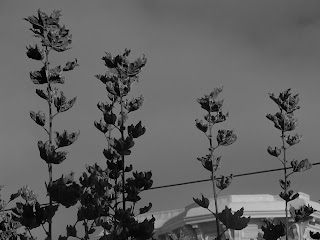Symmetry
Asymmetry
Balance
Artist Statement
For this assignment, I had to take pictures of symmetrical, asymmetrical, and balanced objects. Symmetry is where the content on both sides of a vertical dividing line are the same. To capture images I looked for objects and made sure that the left half of the object could be folded over the right and match, then a made sure to position the camera so that the middle of the frame was aligned with the symmetry line. The concept of asymmetry is like symmetry in that there should be an object of focus on one side, but in this case it should not match anything on the other side. In order to capture asymmetrical objects, I found symmetrical objects and moved the camera so that the whole object only occupied one half of the frame or I found two similar objects that could not quite be reflected over the other and be equal. The third concept that I had to capture was balance. A balanced image consists of two similar objects, one on either side of a center dividing line, that have the same visual weight in the frame. I made balanced images by finding two objects that looked similar and that were mostly the same size and that had similar colors.












































